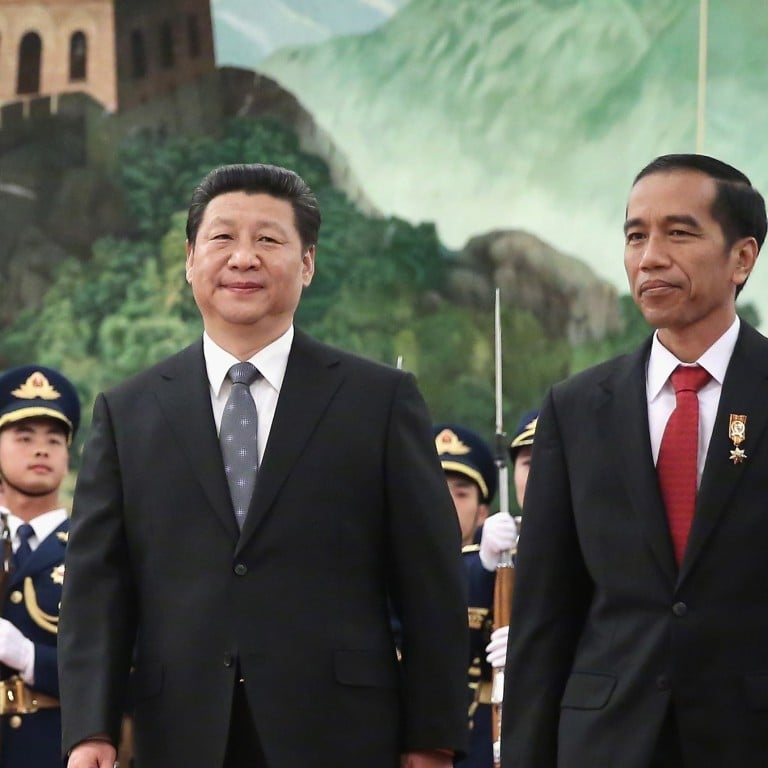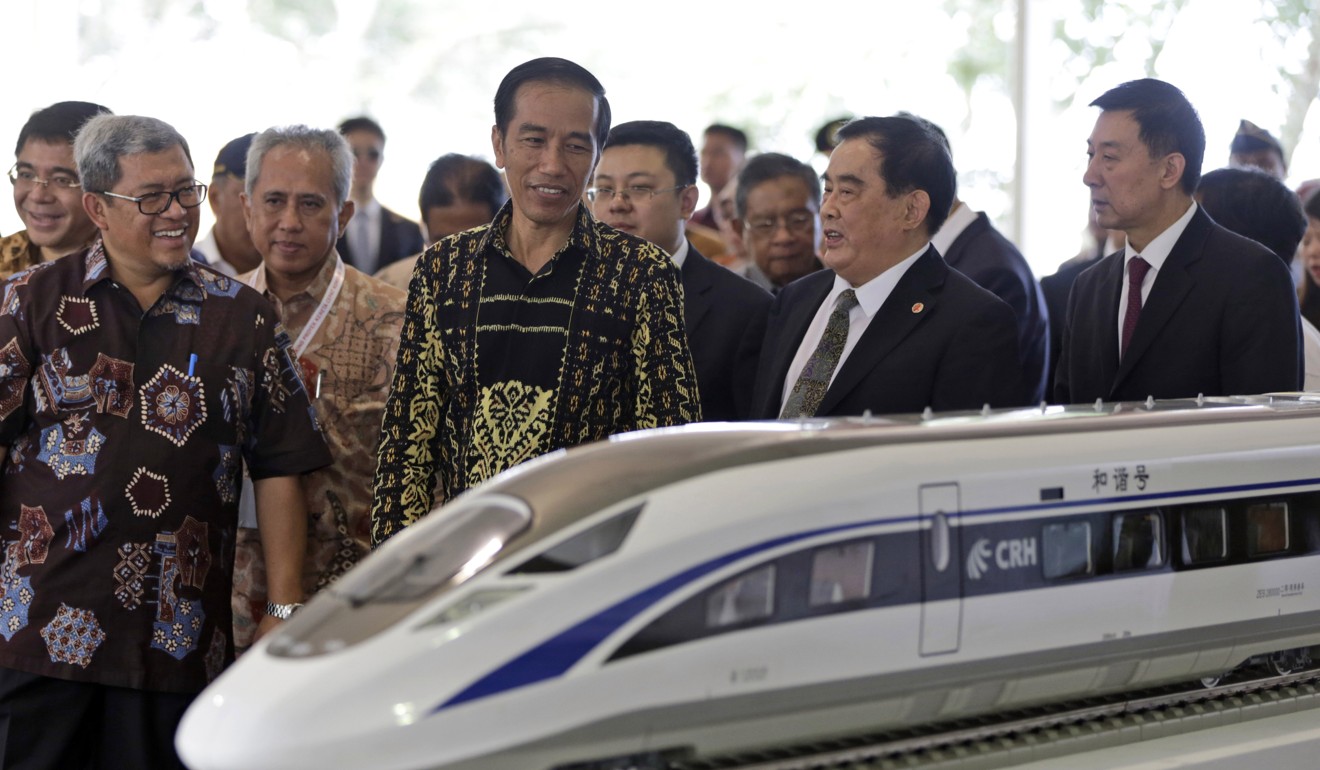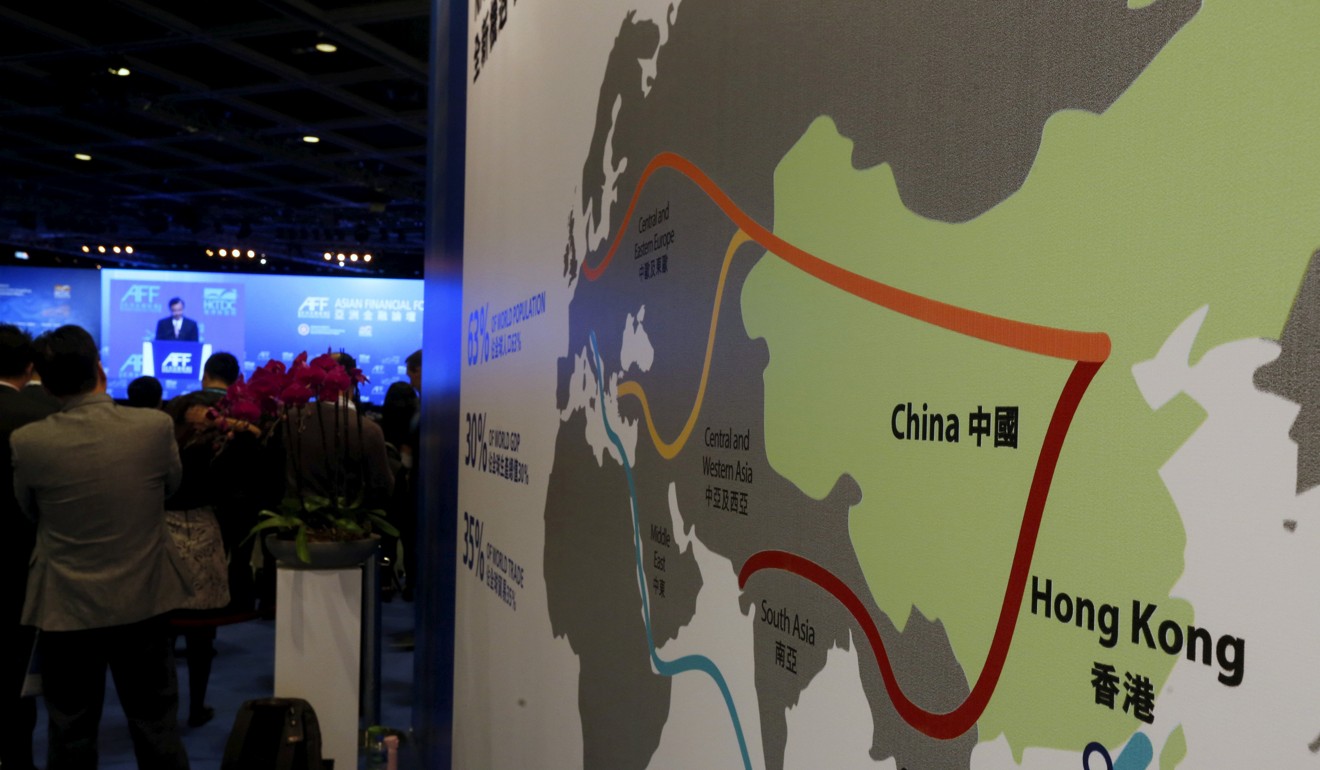
Debt fears, delays and land disputes: how China’s belt and road plan for Indonesia got off track
- China’s high-speed rail project, linking West Java city of Bandung, has been plagued by delays, complaints of inadequate compensation for villagers and is now a central point of debate in the coming election
- Fears have also intensified over the potential debt trap that comes with China’s global infrastructure initiative
On a sunny Tuesday two weeks ago, at least a dozen security officers were milling around Cipinang Melayu, where Indonesia’s China-funded high-speed rail will pass through, watchful of intruders.
The site under the Jakarta-Cikampek tollway, one section of the rail link connecting Indonesia’s capital to the West Java city of Bandung, was blocked by zinc hoarding. It was not possible to see what was going on inside but government officials have said that two years after the project began, work is only 7 per cent complete.
But the state-owned construction firm involved in the project, PT Wijaya Karya (Wika), is confident the 142km link between Jakarta and Bandung will be 60 per cent complete by the end of the year, according to its president director Tumiyana.

It will be Southeast Asia’s first using Chinese equipment and technology, from train carriages to operating systems, with China Development Bank said to be loaning Indonesia the bulk of the US$6 billion cost.
The project will help to fulfil Indonesian President Joko Widodo or Jokowi’s pledge to improve crumbling infrastructure that has deterred greater investments. But Jokowi’s willingness to take Chinese loans and investments has come under scrutiny in the run-up to the April 17 elections.
His competitor, former general Prabowo Subianto, pledged to review the rail project to get a fairer deal from Beijing.
Review of infrastructure investments in Indonesia not scapegoating China, Jokowi’s opponent says

Tumiyana is focused on moving the project forward. He is confident the project is on track due to the arrival of a tunnel-boring machine in February, and work has begun on the construction of a tunnel under the Cikampek tollway.
Tumiyana said 90 per cent of land needed for the project, which will pass through the province of West Java and the capital Jakarta, had been acquired. Of the 5,200 land parcels – covering 96 villages and other communities – about 4,700 had been released, including an area near the Halim airport managed by the Indonesian air force. Halim is the starting point of the high-speed rail.
By land, air, sea or elephant: 1 billion people across India, Indonesia and Australia prepare to vote by any means
Aa Umbara Sutisna, the mayor of West Bandung, said that KCIC’s offer of public compensation of 16.5 billion rupiah (US$1.2 million) was inadequate.

“Compensating my people can come in the form of different community development programmes, programmes that will help my people adjust to their new life ,” Aa Umbara said.
The rail project aside, there is also much disquiet over a China-funded dam project in Pamakkulu, South Sulawesi. The 99 billion rupiah dam, targeted to be completed by 2022, will produce 2.5 megawatts of electricity, accommodate 82.1 million cubic metres of water, and supply irrigation to an area covering 6,150 hectares.
However, the project will affect 640 hectares of villagers’ land and destroy dozens of houses.
The appeal of Joko Widodo – Indonesian president, rock-loving everyman and giver of bicycles
Villagers have complained that the compensation offered, ranging from 3,000 rupiah to 25,000 rupiah per square metre, is too low.
If we’re not able to pay China’s loans in the end, [China] will end up taking over those infrastructure projects which are important and significant for the public
Apart from the high-speed rail and the Pamakkulu dam, the Indonesian government is also keen to tap Chinese investment for new projects – such as industrial complexes and ports – worth up to US$60 billion, according to a Reuters report in December.
Diana Gultom, from debtWATCH Indonesia, expressed concerns over the possibility of the country falling into a “debt trap” due to its reliance on China to fund infrastructure projects.
‘Let’s copy Malaysia’: fake news stokes fears for Chinese Indonesians
“We can learn from Sri Lanka’s experience. If we’re not able to pay China’s loans in the end, [China] will end up taking over those infrastructure projects which are important and significant for the public,” she said.
However, Trissia Wijaya, a PhD candidate from Murdoch University, has a different perspective.
She pointed out that most of the debt deals between Indonesian and Chinese partners were private-sector contracts – and would thus not affect the state budget.
“Should any risks emerge, the government is fully exempt from business debt liability,” Wijaya said.
Also, China’s loans to Indonesia were smaller than what Japan had loaned the country, Wijaya added.
Last year, Indonesia’s debt to China amounted to US$1.592 billion, compared to the US$12.908 billion it owed Japan.
